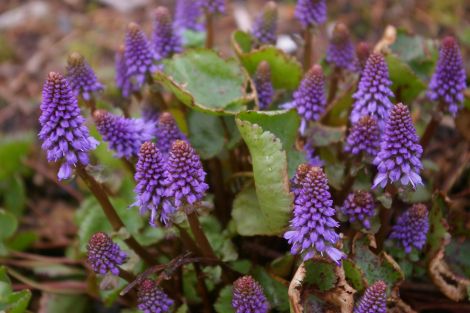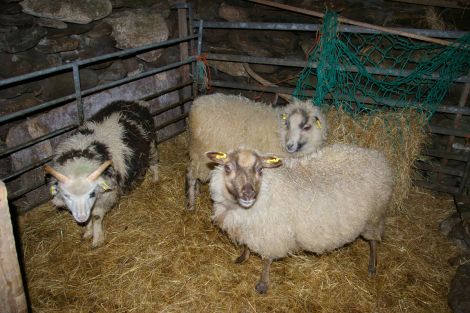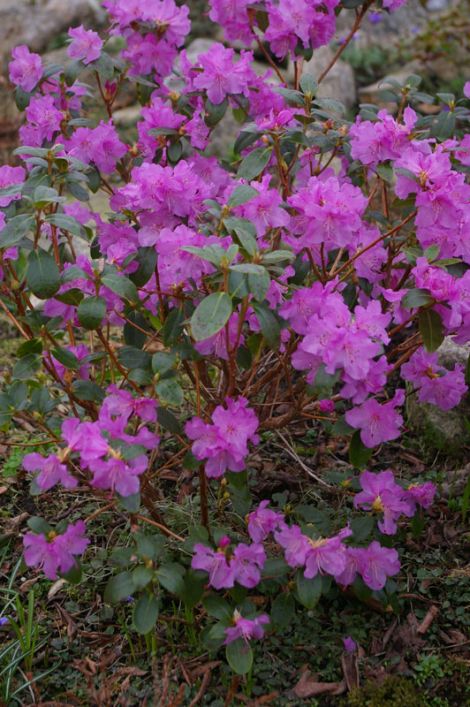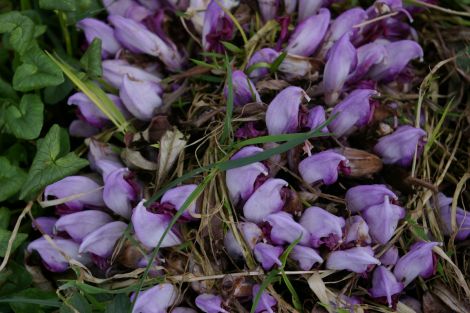Four Seasons / Four Seasons – Early Spring 2013
From a distance they could be mistaken for tiny splashes of mud, nothing unusual during wet weather, but this has been a dry spring so far. A neighbour, who ‘phoned us last August, said they were alerted to the fact that all was not well with their flock by spots of blood, visible on the newly shorn fleeces.
We carefully checked each fleece and each sheep during clipping, but found no trace of the little critters. Having never come across one in over three decades of sheep keeping, we had no idea what a sheep ked looked like. Now – eight months later – we know.
Those small Shetland hill lambs, born late in the season and/or to mothers with an insufficient milk supply, have little chance of surviving the winter in the “wild”. Brought into a cosy byre, wormed, fed ad-lib hay, and small amounts of grain, it’s a joy to watch them “dry up”, put on weight rapidly and gain in strength.
Given their small stature, they’re known as “poodles” at Lea Gardens. This year’s crop of three failed to thrive and as one started losing its fleece, the reason was revealed. Those “splashes of mud” turned out to be sheep keds. They look like small ticks, but are actually wing-less flies that suck the blood of their victims, preventing them from putting on condition.
We’ve since learned that they’ve made a comeback in several parts of Shetland which, like our common grazing, had been free of the pest in living memory. According to the experts, this can only happen through the introduction of animals from a different area, or from outwith Shetland, as keds spend their entire lifecycle on the sheep and die within a few days once removed from their host. Affected animals will bite and scratch themselves, and can be observed rubbing against fences or the ground.
Become a member of Shetland News
Sheep keds are easily spotted on a light fleece and can be detected on a dark one by parting the wool and looking for anything that moves. An insecticide, poured onto the animal’s skin between the shoulder blades, kills all adults, but has to be repeated after 4-6 weeks to take care of the newly-hatched.
Prevention is always better than cure, and any imported sheep should be treated for this parasite and kept in quarantine before they’re introduced to the flock.
There’s one parasite that doesn’t seem to have a detrimental effect on its victims, and greatly enhances the appearance of its host with a carpet of hooded purple flowers in spring.
Lathraea clandestina (purple toothwort), a herald of spring at Lea Gardens, is ground-hugging perennial that has no chlorophyll and makes a living at the expense of willows by latching onto their roots. Alders and poplars also act as hosts and, at Inverewe Gardens, the little sap-sucker has travelled a considerable distance courtesy of a rhododendron hedge.
No willow tree should be without one, and introducing purple toothwort to your garden, provided you have a suitable host, couldn’t be easier. Push a few seeds into the ground above the tree’s roots, or plant a few of the cream-coloured curds which resemble molars and have given the plant its vernacular name.
This has been a most unusual spring so far. In Tresta, we’ve had virtually no precipitation since the middle of February. The ground is the driest for early April I’ve seen in over thirty years, which makes all those gardening tasks so much more pleasant.
Clearing borders is a mammoth task in a two acre garden, starts in autumn, but invariably drags on into spring.
I know of several gardeners who leave everything in-situ until the start of May, in the – mistaken – belief that those rotting stalks and wads of decaying foliage protect the new growth from frost and wind and provide shelter and sustenance for wildlife.
The only wildlife I find amongst my garden’s debris is slugs, and the new growth, unnaturally drawn and pale underneath the old, is all the more vulnerable once the “protection” is removed.
It’s a subject that divides the gardening community, but I prefer to have my beds and borders ship-shape and Bristol-fashion to set off the flowers of early spring.
I’m often asked to provide lists of plants that provide early colour before the daffodils come out or to keep them company, so here are a few of my favourites:
- Crocus tommasinianus, pale lilac, late January to March, increases prolifically;
- C. tommasinianus ‘Ruby Giant’, satin-textured purple, March/April;
- Chionodoxa (Glory of the Snow), pale to deep blue, white, February onwards;
- Chionodoxa ‘Pink Giant’, large, dusky pink spikes, March/April;
- Anemone blanda, star-shaped, various blue shades, pink and white cultivars;
- Scilla sibirica, dwarf squill with gentian-blue flowers, March onwards;
- Scilla bithynica, dwarf bluebell, great for naturalising and wild gardens, March/April;
- Pushkinia libanotica, clusters of ice-blue bells with a darker stripe, March onwards;
- Rhododendron praecox, small upright shrub, amethyst flowers February to April;
- Rhododendron ‘Christmas Cheer’, large evergreen shrub, pink trusses March/April;
- Synthiris missourica, woodland/rockery perennial, light purple flowers, February-April;
- Olsynium douglasii, grass-like leaves, large magenta purple flowers, March/April;
- Ranunculus ficaria, lesser celandine. The name strikes terror into the hearts of many gardeners, as the species can be such a dreadful weed.
There are several good cultivars, many with fetchingly marked foliage, doubles and singles and colours including cream, orange and pale green. The late Christo Lloyd’s discovery ‘Brazen Hussy’ has chocolate brown leaves, which set off the yellow flowers particularly well. All are well-behaved and make great companions for early spring bulbs.
Rather than fighting a frustrating and probably fruitless battle against those patches of celandine in your garden, why not plant some of the above listed bulbs amongst them and turn them into colourful spring “meadows”?
Rosa Steppanova (www.leagardens.co.uk)
Become a member of Shetland News
Shetland News is asking its readers to consider paying for membership to get additional perks:
- Removal of third-party ads;
- Bookmark posts to read later;
- Exclusive curated weekly newsletter;
- Hide membership messages;
- Comments open for discussion.
If you appreciate what we do and feel strongly about impartial local journalism, then please become a member of Shetland News by either making a single payment, or setting up a monthly, quarterly or yearly subscription.

































































